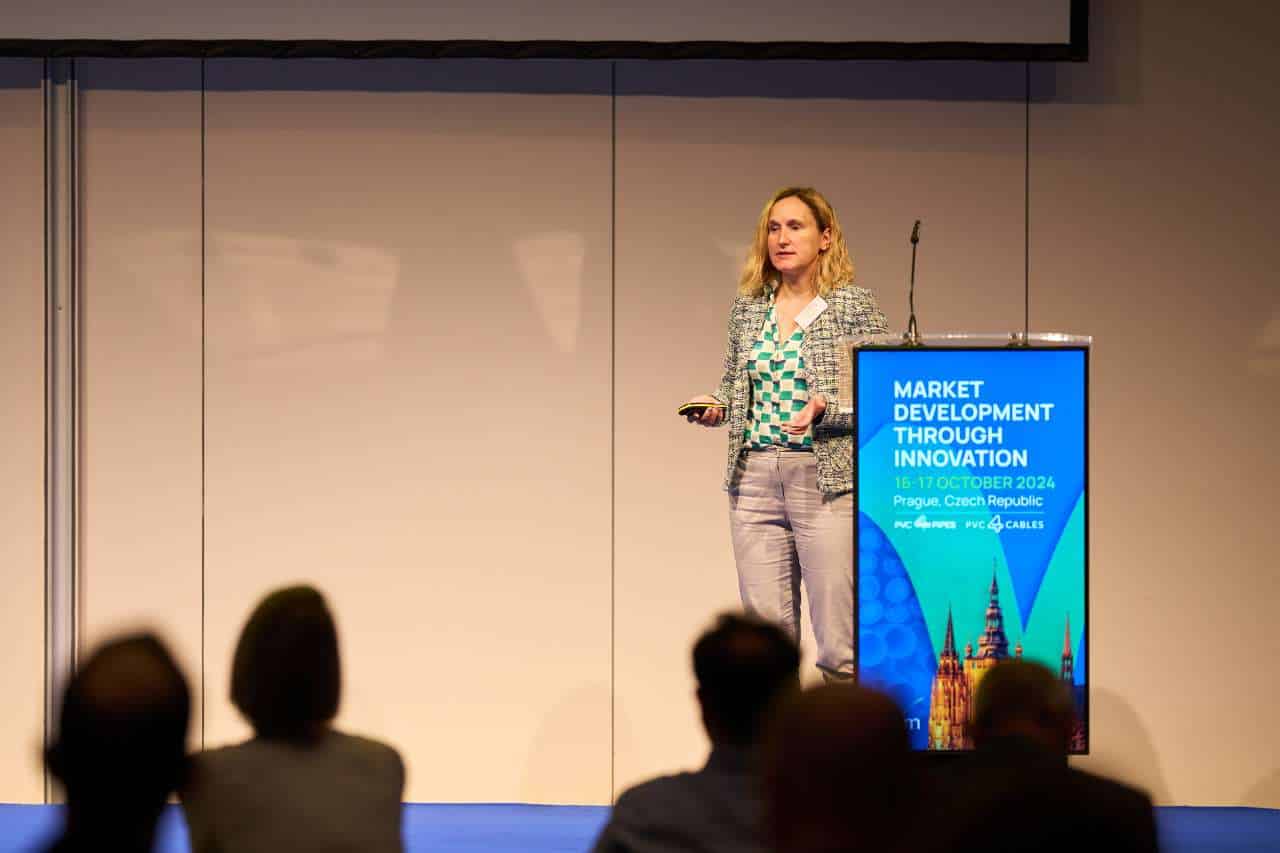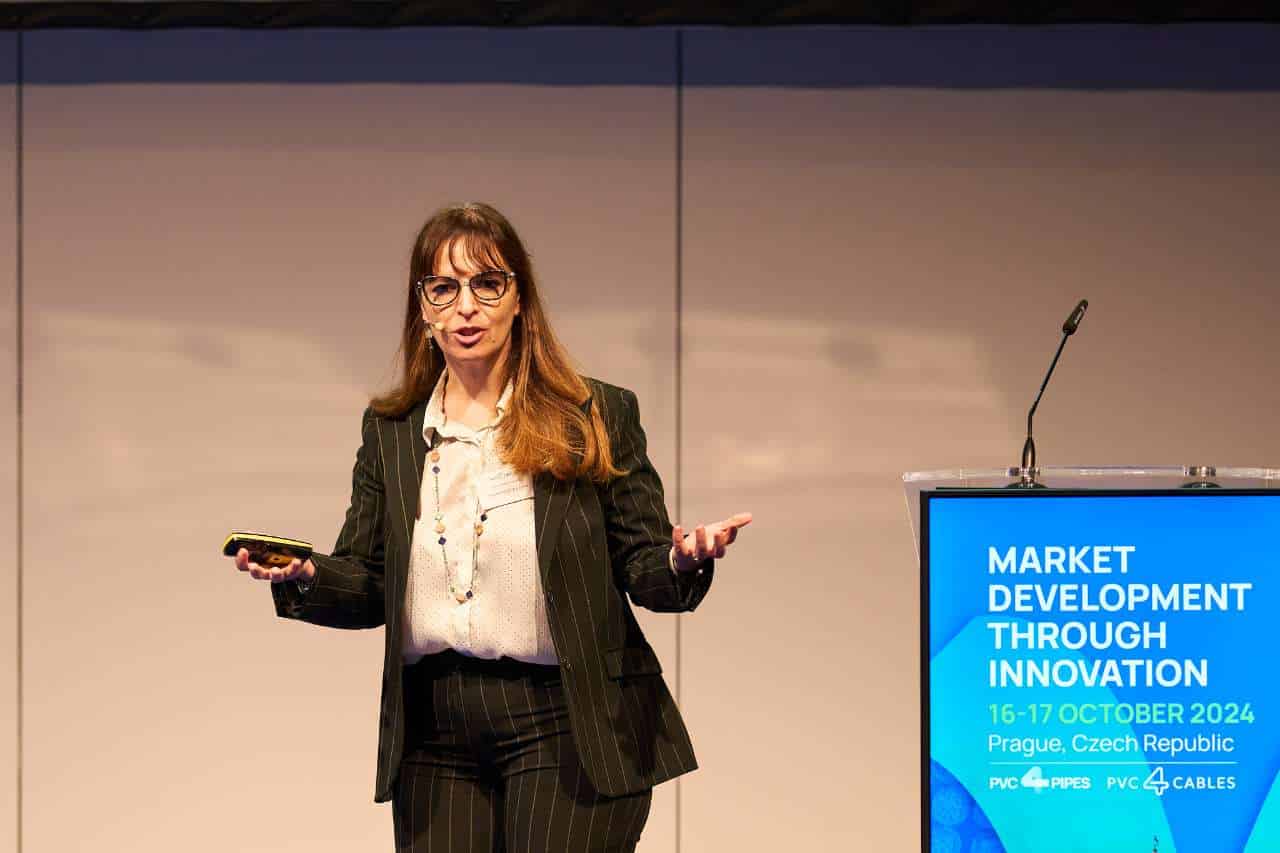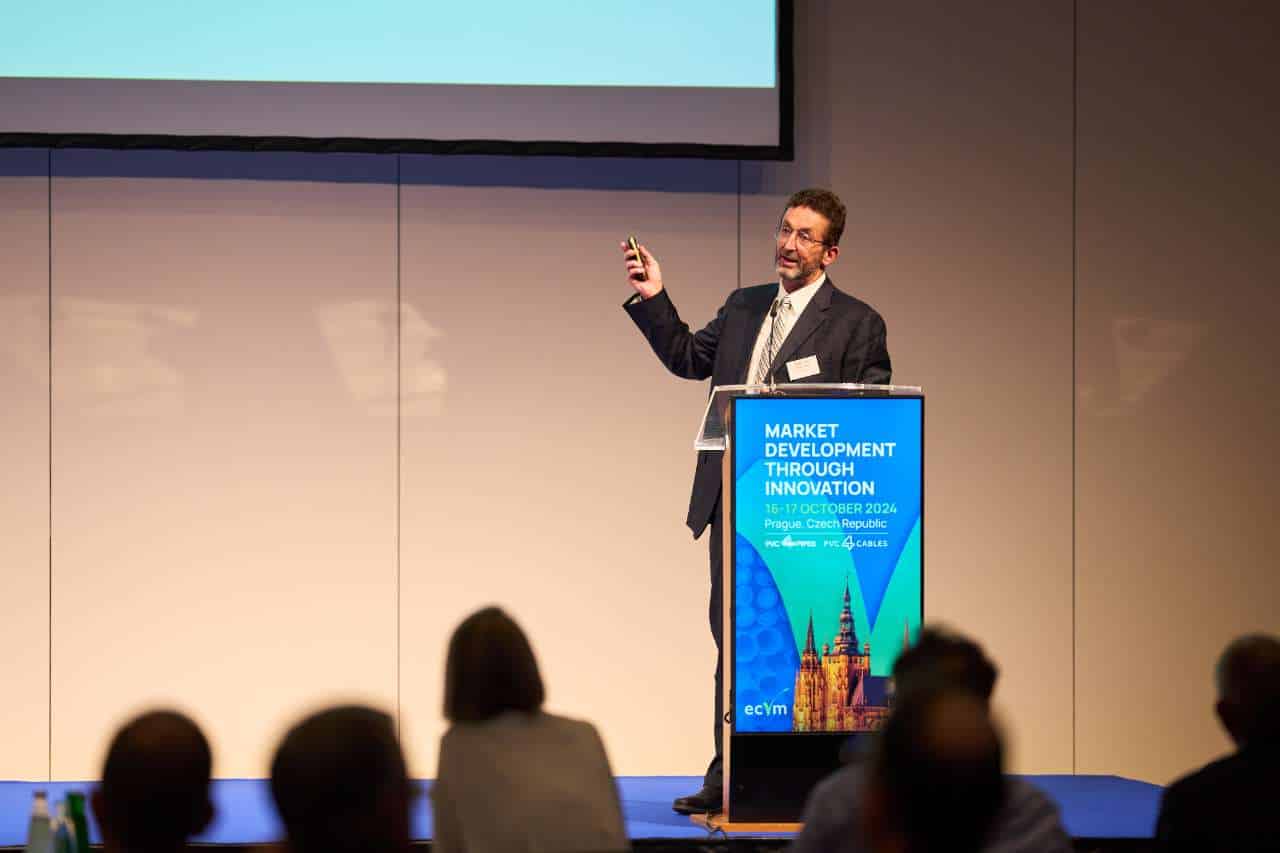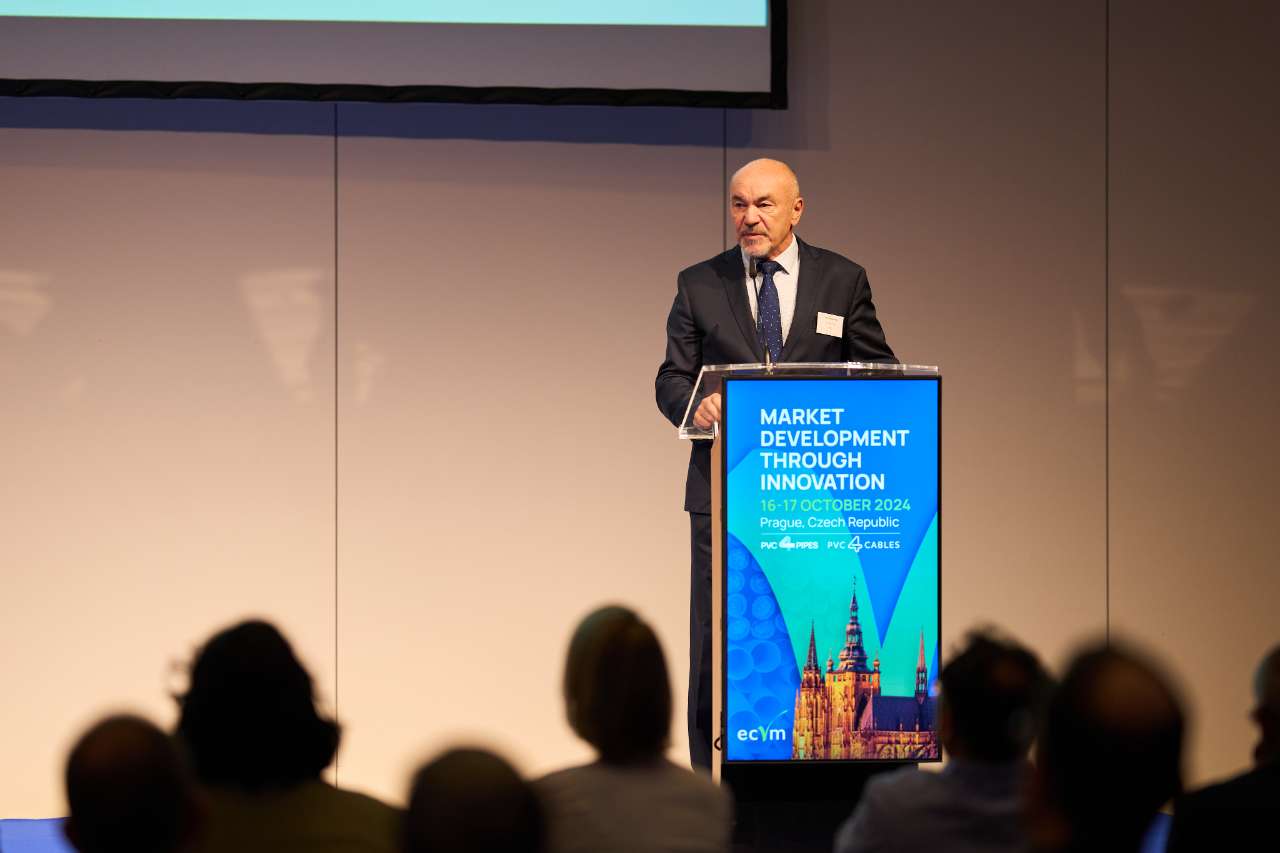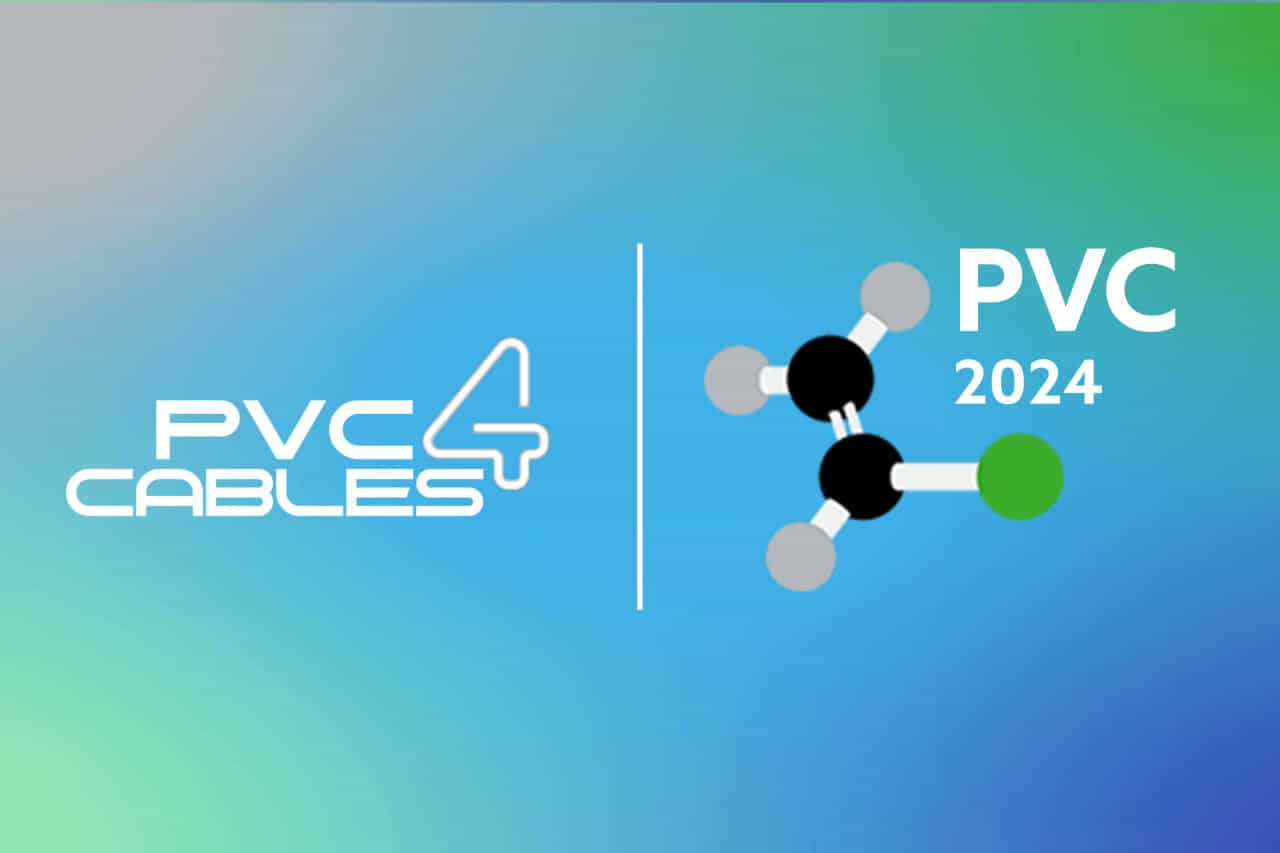
4th PVC4Cables Conference: Market Development Through Innovation
With the theme Market Development through Innovation, the 4th PVC4Cables Conference took place in Prague, Czech Republic, on Wednesday 16 October 2024. Organised by PVC4Cables, the 4th event dedicated to the PVC cables sector brought together around 150 representatives of industry, authorities, institutions and research institutes from 26 European and non-European countries.
Introducing the conference, Charlotte Röber, Managing Director of ECVM (the European Council of Vinyl Manufacturers) and VinylPlus® (the European PVC industry's commitment to sustainable development) underlined the role of PVC in critical applications for society such as cables: “Cables power our digital life, which means that we need to work with regulators to address regulatory challenges and seize opportunities that can help cables contribute to Europe's strategic autonomy.”
“Since the set-up of PVC4Cables and our first conference in 2017, we have been showing that the PVC cables industry is a fast-developing sector and it is continuing to innovate," said Magdalena Garczyńska, Project Leader of PVC4Cables. "With over 30 studies published in the technical-scientific literature or presented at international events, we have demonstrated that it is possible to obtain increasingly high-performance formulations for PVC cables in technical and safety terms, but also in terms of environmental sustainability. Ensuring the recyclability of PVC cables, for example, is one of the key aspects of our activities."
Prof. Maurizio Bragagni, CEO of Tratos Group, confirmed that PVC can play a leading role in present and future markets, and in rapidly developing sectors. According to estimates, PVC compounds for cables are expected to grow at an annual rate of 5.2% until 2030 at a global level. This thanks to the smart upgrading of the power transmission and distribution systems, but also to the strengthening of smart grids. Driving sectors will be construction, automotive, renewable energy and telecommunications. This of course provided that the PVC cable industry is able to respond to the new global trends by continuing to focus on innovation and sustainability.
Focusing on the central European market, Miroslav Trojan, President of The Association of Cable and Wire Manufacturers in the Czech Republic and Slovakia, highlighted that cable production has a long tradition in the two countries, beginning around 1920. Today the sold production is about 200,000 tonnes, 64% of which is exported. PVC cables cover around 65% of the market in the Czech Republic and Slovakia. Overall, the Eastern European production represents around 40% of the total European PVC cables production, said Eric Grange, Marketing Manager of Benvic. Poland covers around 13% of the European market, with a consumption close to 95,000 tonnes of PVC in 2023.
In terms of safety and sustainability, a review on the latest studies conducted on the toxicity of fumes in case of fire – presented by Gianluca Sarti, R&D Manager of Reagens, on behalf of PVC4Cables and by Prof. Laura Mazzocchetti, University of Bologna – underlined how in reality, and contrary to common perception, acidity is a secondary parameter in fire safety, while carbon monoxide emerges as the leading threat in the effluents produced during a fire. Studies also revealed that the smoke production from PVC cables can be significantly mitigated, almost aligning with halogen-free cables, through the strategic use of appropriate flame retardants and smoke suppressants.
In terms of innovation, the research promoted by PVC4Cables has highlighted how nanotechnologies applied to PVC cables could significantly improve their technical and physical performance; that acid scavengers used in special-grade PVC compounds reduce the emission of acidic smoke; and that the development of a new generation of PVC cables with innovative formulation is possible, and it is compliant with a B2ca s1 d0 a3 classification under CPR. If the acidity of the fumes cannot be considered a reliable indicator of toxicity, a HFFR cable classified as B2ca d0 s1 a1 and a PVC cable classified as B2ca d0 s1 a3 would guarantee the same safety in case of fire.
As an example of innovation to improve formulations, Alternative to Medium-Chain Chlorinated Paraffins (MCCPs) , was presented by Prof. Camillo Cardelli, Senior Researcher, Scientific Coordinator and Co-Founder of iPOOL. “Our research – he said – shows that increasing the chlorine content in PVC cable formulations, by using bio-based chlorinated esters instead of traditional chlorinated paraffins, significantly improves flame retardancy and cable performance into EN 50399 (CPR) burning test, while also improving environmental performance – a potentially groundbreaking discovery in fire safety and sustainability.”
Introducing the session dedicated to the circularity of PVC cables, Carlo Ciotti, Spokesperson of PVC4Cables, reiterated how the strategic approach of the PVC cable industry must focus on two criteria: “Planning the future, ensuring that PVC formulations are even more sustainable and do not contain additives that would preclude their mechanical future recyclability; and managing the past, finding, for the old PVC containing legacy additives, optimal solutions that combine safety for humans and the environment with the saving of raw materials and energy.”
Two presentations focused on technologies suitable for the separation and extraction of legacy additives present in old cables at the end of their life. Alessio Boscolo, Researcher at Phoenix RTO, presented the pilot plant currently under development in Italy, that uses X-ray fluorescence (XRF) technology and NIR (near infrared) scanners for the detection and separation of end of waste containing lead, MCCPs and DEHP. An innovative solution, based on the VinyloopTM technology, for the extraction of legacy additives from PVC cables waste was the focus of the presentation made by Eric Romers, Head of Project Circle, Sustainability Business, INEOS Inovyn.
The discussion on new and fairer standards for the classification of PVC cables under the Construction Products Regulation (CPR) is also part of the PVC4Cables platform focus. The EN 60754-2 standard is employed in the CPR to indirectly assess the acidity, whereas detailed scrutiny revealed the profound impact of varying temperatures and heating regimes on hydrogen chloride emissions in the gas phase, casting doubt on the reliability of EN 60754-2 as a tool for assessing acidity in real fire scenarios. As a contribution to the discussion, a confrontation of PVC Cables Standards in Europe and Beyond was illustrated by Prof. Cardelli. “It is very urgent to align global testing methodologies and adopt a common set of fire safety criteria – he said. A set of globally accepted minimum fire safety parameters would help the market to orient its research and products in a common direction and promote international collaboration between standardisation bodies, industry associations and standardisation organisations.”
“We are extremely satisfied with the interest aroused by the topics we presented today and the debate that emerged from them,” said Magdalena Garczyńska, concluding the conference. For the first time we also registered participation from some important non-European countries. This stimulates us even more to collaborate at all levels on sustainability and innovation, to face together the challenges posed by the development of global markets."


